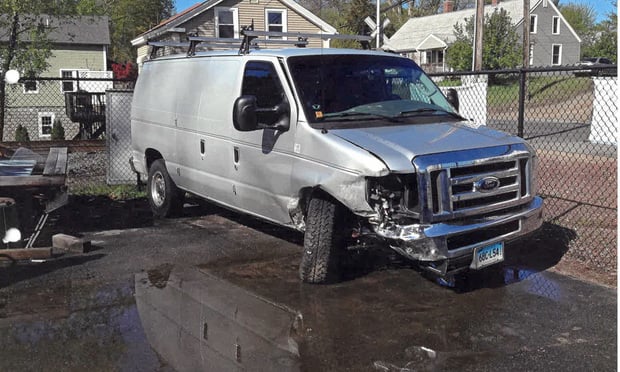(The following article was adapted from Mr. Payne's presentation at the Aon Specialty Product Network Resource Fair, which was held in July in Banff, Alberta, Canada.)
I ONCE read an article about gambling that contrasted slot-machine players with blackjack players. It said people who play the slots believe they are the victims of fate. Other than perhaps holding a rabbit's foot, they feel there is little they can do to influence what happens to them in the casino, or in the world at large. Blackjack players, on the other hand, feel that they can control their destinies.
When it comes to insurance, most of your small clients are a lot like slot-machine players. They buy guaranteed-cost policies from carriers, believing they have no ability to significantly control the terms and costs of their coverage. Middle-market clients, however, are more like blackjack players. These entrepreneurs believe they can control their destinies in most aspects of business-including their insurance, if given the option. That's where group captives come in. By joining them, entrepreneurs gain control over their insurance destinies.
Compared with guaranteed-cost insurance, the cost of coverage provided by a group captive tends to be lower over the long run, and a member's control over the program is much greater. Not surprisingly, more entrepreneurs are looking into these mechanisms. While no organizations keeps separate statistics for group captives, we know from experience that they represent at least $1.5 billion in premium-and are growing rapidly.
There are several types of group captives. One is an agency-owned captive, in which the agency puts up the formation capital, accepts a certain amount of risk, and owns any underwriting profit and investment income. Then there are member-owned group captives, which is what I will discuss in this article. An agency may sponsor such a captive, but it doesn't invest capital or take on risk. Rather, all the captive members are shareholders; they put up the equity, take the underwriting risk and are entitled to any underwriting profit or investment income.
At Aon Alternative Risk Underwriting, which is part of Aon Underwriting Managers, we facilitate the creation and operation of agency-sponsored, insured-owned group captives. In that capacity, we provide or arrange for numerous services, including captive design, underwriting, actuarial analysis, fronting paper, reinsurance, claims adjusting, shareholder reports and overall administration. The captive pays us a fee for our services.
GL/products liability, workers comp and auto liability are the main lines insured by group captives. While a group captive can be created to cover just a single line, it works better with at least two. Fronting insurance companies and reinsurers prefer multiple lines. Also, the more lines you have in a captive, the likelier it is that insureds will stay in it for the long term. In addition to the primary casualty lines, a group captive can be used to provide commercial property and business income insurance-even professional liability lines like directors and officers liability insurance and employment practices liability insurance.
Why get involved?
Why should you offer group captive services? Here are just a few reasons.
?To differentiate yourself from competitors. A group captive gives you something new to sell. You can even private-label your agency-sponsored captive. The ability to offer clients a group captive makes you look more professional and enhances your ability to sell the other products and services in your portfolio. ?Your competitors may offer this service if you don't. From time to time I field calls from panicked agents, asking for our help, who are facing the possibility of losing a valued client to a producer offering a group captive. These calls tend to pop up in spots, as businesses in a certain market segment become aware of, and embrace, the group captive alternative.
?A group captive can give you a new market. With all the mergers that have been taking place, there are fewer and fewer insurers. A group captive gives you a new facility with its own proprietary capacity. In essence, it's a new insurance market you can offer your clients and prospects. Without developing alternatives for yourself and for your customers, you may be at the mercy of an oligopoly of large carriers in the not-too-distant future.
?A group captive gives you a new risk management product. A captive can offer insureds a lot of services and advantages that usually are available only to national accounts. Your middle-market clients will appreciate those services.
?A group captive works regardless of market conditions. It's fallacious to say that group captives are attractive only in a hard market. We created and administered group captives throughout the last soft market. Group captives may not grow as fast during a soft market as they do in a hard market-but they still grow. And they rarely are disbanded. The insureds in a group captive are stockholders. They are proud of their facility and are not going to abandon it the minute the market changes. For the same reason renewal retention in a group captive invariably is excellent, typically 95% to 97%.
?Group captives are not boring. Let's face it; selling insurance sometimes gets a little repetitious and is not always very exciting. You can't say that about a captive.
?A group captive can increase your revenue. Agent-sponsored group captives (as opposed to those formed solely by insureds) compensate agents for business placed in a group captive, both at inception and after the captive is in operation. We, for instance, negotiate with agents for the payment of commissions or fee-based compensation, according to their wishes. The agents do business with us as they would any other market.
Group-captive prospects
What sort of clients make good group-captive candidates? Here are a few criteria:
?Size: Group captives tend to attract middle-market companies, which mostly are privately held. This is not for Fortune 500 companies, which are large enough to create their own single-parent captives. At inception, a group captive should have six to 12 qualified insureds collectively paying $5 million or more in premium, with the smallest member paying at least $200,000. If you get much below that figure, the required capital contribution, which we'll discuss later, looks a little too large to most prospects.
?Loss experience: These businesses should have better-than-average loss experience for their class of business. If they have good loss ratios, they can keep all the underwriting profit and investment income that an insurer otherwise would earn off their business.
?Financial condition: It's important that insureds be in good financial shape, because you'll want them to be able to pay their premiums and remain in the group captive for the long haul.
?Type of business: Insureds in a group captive are not class underwritten. So if they happen to be in a class of business that the market perceives as difficult, they may be able to save significantly by forming a group captive and performing better than class underwriting would predict. So you're looking for tougher classes of business-and the cream of the crop in those classes.
What's in it for insureds?
For qualified prospects, group captives offer significant advantages over guaranteed-cost insurance, including:
?Market leverage: Instead of being a $250,000 account, out there alone in the marketplace, an insured may be part of a $5 million captive, which enables the insured to get better terms and pricing from the market.
?Control: When a business buys a guaranteed-cost policy, the carrier controls everything. In a group captive, however, the members own the investment income-which puts them ahead right there. They also gain control over reinsurance costs, claims handling costs, and-most important-loss costs. The captive can hire its own attorneys, who specialize in the industry to which the captive members belong. The captive can hire its own TPA and arrange for customized loss control. Through all those avenues, the captive's members can shrink their loss costs. And that's a big win.
?Lower and more predictable insurance costs: Such advantages as customized loss control and claims service, along with retained investment income usually add up to lower-and steadier-insurance costs for captive members over the years.
Sometimes insureds tell agents they wouldn't want competitors in a group captive to have access to their financial data. Group captives can be operated, however, in a manner that keeps such information confidential. Even premium payments can remain confidential, if necessary.
Achieving critical mass
Some large agencies may already have a sufficient number of interested, appropriately sized clients within a given industry segment to form a group captive. Most agents and brokers, however, probably will have to do some searching to achieve captive critical mass. Here are a few places to look:
?Prospects: Maybe you have a prospect you've been calling on who's been complaining about the market-and maybe he has friends.
?Industry leaders: You might have an influential customer who might not only join your captive but be in a position to influence others to join as well.
?Other agents: You might join forces with other agents to create a facility. (My advice would be to work with a couple of agents you've known and trusted for years, rather than with people you may know casually through an agents association or some other organization.) After you've formed your captive, you can even appoint agents to bring in more business.
While agents interested in forming group captives sometimes approach associations, I would advise against it. The association may market the captive as their idea and may expect financial compensation. If the association winds up sponsoring and labeling the group captive, they could open up the marketing to other brokers. So it's best to make the captive your idea and your product. Then you can go out and write new business for it on your own terms.
Structure
In a typical group captive, a captive facility (like ourselves) is retained to design and manage the captive as previously described. The facility arranges for a fronting insurer to issue policies to the captive's members. Premiums for those policies, less the fronting insurer's fees and various other expenses (residual market loads, taxes, "board and bureaus," etc.) are then ceded to the group captive, which functions as the fronting company's reinsurer. The fronting company usually obtains reinsurance above the group captive layer up to the limits of the fronting insurer's policy(ies). (In some cases, the fronting insurer may take a large "net & treaty" position). It is not uncommon for the captive members to band together to obtain additional protection via a "member sponsored" umbrella insurance program that would attach above the primary group captive program limits.
The elements of a group captive can be structured in numerous ways, depending on the members' objectives. Here, for instance, is how we usually structure the layers of protection, in the order they would respond to losses.
1) A deductible or SIR applicable to each captive member, per line of coverage.
2) A dividend pool, with a size determined to cover all members' expected losses in each line of coverage. Those members whose losses turn out to be lower than the projected loss pick benefits accordingly.
3) A risk-sharing pool, designed to provide a limited amount of catastrophe coverage, per line of coverage provided by the captive. It's in this layer that most of the risk sharing among the captives members takes place.
4) A reinsurance layer ( excess of loss), covering all lines of insurance provided by the captive. It attaches above the risk-sharing pool and extends up to the limit of the fronting policy. Aggregate stop protection is usually purchased to cap the aggregate risk for members within the captive.
We use this structure to provide highly customized protection. For instance we might create a captive in which a fronting carrier issues workers comp, auto liability and GL/products liability policies, each with $2 million limits. The group captive might be designed to enable the members to retain up to $500,000 of losses in each line, with a $1.5 million reinsurance layer above that. A given insured in the captive could elect to structure the first $500,000 of workers comp coverage as a $200,000 deductible, topped by a $200,000 dividend pool layer, and a $100,000 risk-sharing pool layer. For auto liability, the insured could select a $10,000 deductible followed by a $200,000 dividend pool layer and a $290,00 risk-sharing pool layer. For GL/products liability, the insured could opt for a $25,000 SIR with a $200,000 dividend-pool layer and a $275,000 risk-sharing pool layer. (The size of the dividend pool doesn't vary because, as previously mentioned, is it designed to equal the members' expected losses and thus its size remains constant.) Meanwhile, another captive member could select an entirely different combination of layers for the three coverages in its program. It might elect to have no deductible or SIR at all for certain lines.
Funding the group captive
All members of the group captive are required to make a one-time capital contribution at program inception. The required stock purchase typically ranges from $30,000 to $50,000. The captives' members also are required to pay annual premiums determined by individual underwriting. The maximum, however, is twice the size of expected losses, plus captive expenses. Captive members also are required to post collateral to protect the captive from having a negative balance in the dividend pools. (The idea is that you don't want someone joining the captive, having a bad year and then leaving.)
Organization
The group captive has an executive committee that's appointed by the shareholders. There also is usually a finance committee to oversee investments, an underwriting and new business committee, a claims committee and a loss-control committee.
A good group captive manager or administrator should work closely with the committees. It should act as a partner and perform the due diligence behind any major decisions. It should not simply hand over the responsibility for running the captive to the insureds. Rather, it should provide guidance every step of the way and discourage ill-advised actions. (It should not, for example, let a rogue investment management company run by a buddy of one of the insureds manage the captive's investments.)
The insureds should have the best of both worlds. As shareholders and committee members they have input into the management of the captive. But the insureds shouldn't have the responsibility of running the captive day to day-nor would many want that duty.
A couple of case studies
I'd like to share a couple of case studies that demonstrate how agents and brokers can benefit from sponsoring group captives. The first concerns an agency I helped start in 1994, several years before joining Aon Alternative Risk Underwriting. We started off with about $120,000 in broker commissions for accounts that we placed in a group captive we sponsored. We ended the year with $1 million in gross revenue (not all from the captive)-and that was during a soft market.
By 1999, we had grown to $8.5 million in revenue, with about $1 million coming from the group captive. I'm not saying that we grew that large because we had a group captive, but it certainly played a bigger role in our success than its revenue alone might suggest. Just being able to offer such a service helped us get in the door with some large, sophisticated prospects. Sometimes we wound up selling guaranteed-cost programs to these pros-pects. In such cases, we could tell them that, while joining a group captive was perhaps not be the best solution for them right then, we would always have the option available. Should the market change dramatically, we'd have a place for them to go. The ability to offer such assurance, and the enhanced status that having our own captive gave us, really helped us grow.
My second example demonstrates how captives can work as a market solution. In July 2003, an agent asked us to create a group captive for some of his clients involved in agribusiness, a market for which coverage has really dried up in the past few years. From July to October we collected and analyzed the clients' loss data, determined the pricing, designed the captive, approached a fronting company, and interviewed the claims third-party administrator and other service providers.
By November, we were ready to meet with the agent and prospective group captive members. We presented pro-forma pricing by insured and for the captive as a whole. We made a presentation, explaining the group captive concept in detail. When we asked for a show of hands of those interested, everyone indicated they wanted in. By mid-December, we completed work on the captive and licensed it as a multiline insurance company, providing workers comp, general liability, auto liability and property insurance. As is typical in such matters, it took about six months to create the group captive, from when we received the agent's initial call to opening for business. If an agent has really good data from the outset, it's possible to create a group captive in as little as 90 days.
Step up to the table
I hope this article has whetted your interest in group captives. They can provide a winning hand for the "blackjack players" among your clientele-and they're not a bad bet for your agency, either.
Want to continue reading?
Become a Free PropertyCasualty360 Digital Reader
Your access to unlimited PropertyCasualty360 content isn’t changing.
Once you are an ALM digital member, you’ll receive:
- Breaking insurance news and analysis, on-site and via our newsletters and custom alerts
- Weekly Insurance Speak podcast featuring exclusive interviews with industry leaders
- Educational webcasts, white papers, and ebooks from industry thought leaders
- Critical converage of the employee benefits and financial advisory markets on our other ALM sites, BenefitsPRO and ThinkAdvisor
Already have an account? Sign In Now
© 2024 ALM Global, LLC, All Rights Reserved. Request academic re-use from www.copyright.com. All other uses, submit a request to [email protected]. For more information visit Asset & Logo Licensing.








